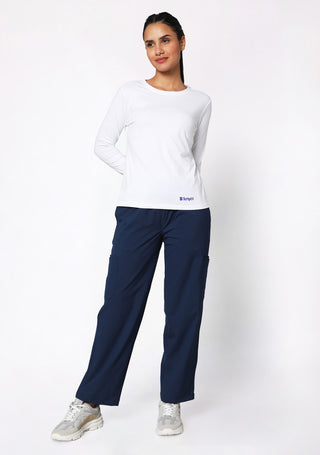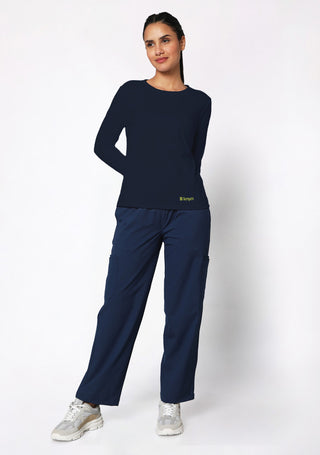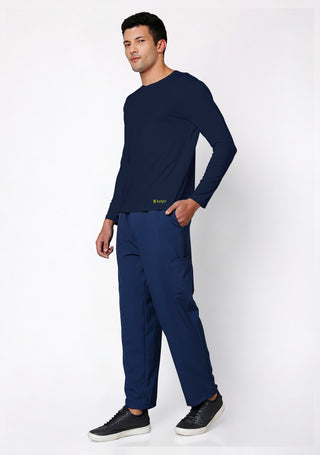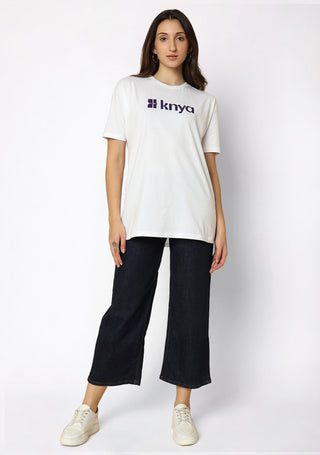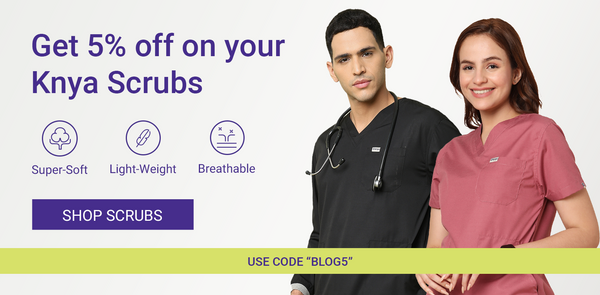When it comes to healthcare work, every little advantage counts. Ergonomic scrubs — those that are thoughtfully designed, properly fitted, and made of advanced materials — are far more than just uniforms. They are a crucial part of a healthcare worker’s toolkit, supporting better posture, smoother movement, enhanced comfort, and even higher morale.
By investing in the right scrubs, healthcare workers not only protect their bodies from unnecessary strain but also elevate their ability to deliver top-notch patient care. In a profession that demands everything from you, it's only fair that your scrubs give something back.
The Impact of Scrubs on Posture and Movement
Scrubs are not just uniforms; they are tools that directly interact with the body during work. Poorly designed or ill-fitting scrubs can restrict movement, cause pressure points, or promote poor posture. Here’s how:
Fit Matters: Too Tight or Too Loose
Tight scrubs can restrict range of motion, making it difficult to reach or bend without strain. They may cause workers to compensate with awkward body mechanics, leading to back, neck, or shoulder pain. On the flip side, scrubs that are too loose can snag on equipment or slip during movement, creating safety hazards and forcing the wearer to frequently adjust their clothing, distracting them from their tasks.
Ideal fit allows full freedom of movement without excess material getting in the way. It should feel natural to stretch, squat, and walk briskly without resistance.
Fabric Functionality: Breathability, Stretch, and Durability
Modern scrubs often incorporate technical fabrics — blends that offer stretch, moisture-wicking, and breathability. Stretch fabrics, in particular, allow garments to move with the body rather than against it. A small percentage of spandex or elastane blended into cotton or polyester can dramatically improve flexibility.
Breathable fabrics help regulate body temperature, preventing overheating during intense activity. Overheating not only causes discomfort but can also lead to fatigue, reducing both mental focus and physical endurance over long shifts.
Durability matters too. Healthcare work is physically tough on clothing, and scrubs need to withstand frequent washing, chemical exposure, and physical strain without losing their shape or structure. Sagging, thinning fabric can change the fit and ergonomic support over time.
Design Features: Pockets, Seams, and Waistbands
The placement of pockets, seams, and waistbands also plays a significant role in comfort and movement:
-
Pockets: Strategically placed, ergonomically designed pockets can distribute weight evenly. Poorly placed or overloaded pockets can throw off balance and posture. Chest or side pockets are preferable to back pockets, which can cause discomfort when sitting.
-
Seams: Flat seams reduce chafing and skin irritation, especially at points of friction like shoulders, sides, and inner thighs.
-
Waistbands: Adjustable or elastic waistbands accommodate movement and changes in body size throughout a shift (for example, due to bloating or water retention), maintaining comfort without the need for frequent adjustments.
Small details like these, when carefully designed, reduce friction points and enhance ease of movement, allowing healthcare workers to move freely and focus on patient care.
Explore All Women's Scrub
Ergonomics and Psychological Comfort
Ergonomic clothing doesn’t just improve physical comfort; it also affects psychological comfort. Feeling comfortable and confident in what you're wearing can boost mood and self-esteem. In contrast, ill-fitting, poorly designed scrubs can make workers feel self-conscious, distracted, or frustrated.
Color, design, and fit all contribute to a sense of professional identity and pride. Many hospitals now allow or even encourage personalization — from scrub colors to small design choices — helping workers feel more like themselves even in uniform.
When healthcare workers feel good in their clothing, they are more likely to approach their work with positivity and focus, ultimately enhancing patient care quality as well.
What to Look for in Ergonomic Scrubs?
When selecting scrubs, healthcare professionals should look for these features:
-
Flexible Fit: Choose scrubs with a semi-fitted silhouette that moves with the body but doesn’t cling tightly. Look for design elements like gussets under the arms or vented hems.
-
Stretch Fabric: Aim for fabrics with at least 2-5% spandex or elastane.
-
Moisture-Wicking and Breathable: Especially important for long shifts and high-activity settings like ERs and surgical units.
-
Flat Seams: To minimize irritation.
-
Secure Pockets: Preferably with zippers or structured designs to safely hold essentials.
-
Adjustable Waistbands: For flexibility during physical activity.
-
Easy Care: Machine washable, wrinkle-resistant, and durable against repeated high-temperature laundering.
Innovations in Healthcare Apparel
The healthcare apparel market has exploded in recent years with innovative brands focusing on ergonomics, style, and performance. Companies like FIGS, Jaanuu, Grey’s Anatomy by Barco, and Cherokee have reimagined the classic scrub into a garment that combines fashion with functionality.
New technologies include antimicrobial fabrics, odor-resistant treatments, and temperature-regulating materials — all of which add another layer of ergonomic support by maintaining hygiene and comfort under intense working conditions.
Some companies even incorporate compression zones into their designs, helping to improve circulation and reduce leg fatigue, much like compression socks do.
Best Scrubs Collection
The Future of Ergonomic Scrubs
As awareness grows about the importance of ergonomics in healthcare settings, future innovations may include even more customizable options, smart textiles that monitor health metrics, and sustainable fabrics that protect both the worker and the environment.
Imagine scrubs that adjust their temperature based on your body heat or fabrics that track hydration levels. These innovations could further close the gap between healthcare apparel and high-performance athletic wear, bringing new levels of support to healthcare workers on the frontlines.





